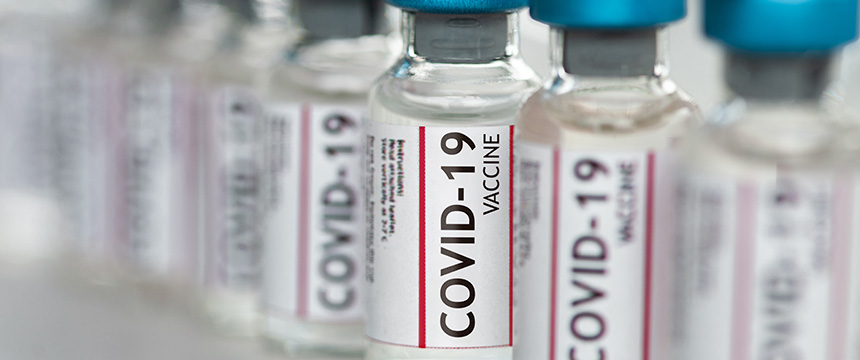Michigan Governor Gretchen Whitmer Announces “The MI Vacc to Normal Challenge” Outlining Return-to-Office, Reopening Plans for State

On Thursday, April 29 Michigan Governor Gretchen Whitmer held a press conference announcing the “MI Vacc to Normal Challenge” to re-open portions of the Michigan economy restricted in response to the COVID-19 pandemic.
The plan sets out four major milestones for loosening of restrictions, which are based upon vaccination rates for Michiganders 16 years or older who have received at least their first dose of a COVID-19 vaccine. The vaccination rate-based milestones are:
- Step 1 – 2 weeks after 55% of the Michigan population ages 16 and older receives at least their first COVID-19 vaccination, the Michigan Department of Health and Human Services (MDHHS) will permit in-person work for all sectors of business, effectively lifting the Michigan Occupational Safety and Health Administration (MIOSHA) requirement for remote work when feasible.
- Step 2 – 2 weeks after 60% of the Michigan population ages 16 and older receives at least their first COVID-19 vaccination, the MDHHS will increase indoor capacity limits for banquet centers, arenas and stadiums to 25% of capacity. Gym capacities will be increased to 50% and the curfew on bars and restaurants will be lifted.
- Step 3 – 2 weeks after 65% of the Michigan population ages 16 and older receives at least their first COVID-19 vaccination, indoor capacity limits will be lifted and residential social gathering limits will be relaxed.
- Step 4 – 2 weeks after 70% of the Michigan population ages 16 and older receives at least their first COVID-19 vaccination, the gatherings and face mask order will be lifted.
In her statements, the Governor noted that currently just over 49% of the Michigan population ages 16 or older has been administered a first vaccination, and that approximately 36% percent have been fully vaccinated. Based upon these statistics it is expected that the 55% threshold for Step 1 could be reached as early as the first week of May, with the in-person work restrictions lifted two weeks later.
The Governor also cautioned prudence, however, and stressed that if daily new cases remain greater than 250 per million residents as a 7-day average in a particular Michigan Economic Recovery Committee (MERC) region at the time of implementing Steps 2 through 3, MDHHS may delay implementation in that MERC region. Governor Whitmer additionally noted that a revised DHHS order is expected to be promulgated on April 30, which will further relax outdoor gathering limits following new guidance from the U.S. Centers for Disease Control and Prevention.
In conjunction with the announcement of the “MI Vacc to Normal Challenge”, the Michigan Return-to-Office Workgroup issued its own recommendations to the Governor’s administration outlining practices that employers should be advised to take as they plan for a safe, phased reopening of offices. In addition to policy-related recommendations for MIOSHA and MDHHS, the recommendations outline the following best practices for employers:
- Reduce Office Density:
- Focus on task-based collaboration and specific needs for in-person work while allowing other tasks and teamwork to be completed remotely when feasible.
- Consider utilizing hybrid work strategies to promote social distancing.
- Address Operational Obstacles:
- Daily Health Screenings – stagger entry times to avoid congregation at screening checkpoints, consider using screening apps to provide information prior to entry.
- Entry/exit through common entrances and elevators – stagger start and end times as practical to avoid congregation.
- Quarantine, Isolation and Testing Guidelines:
- Ensure policy clearly articulates the ability of employees to quarantine/isolate/test without risk of job loss.
- Promote the use of sick and family leave tax credits available for employers with 500 or fewer employees to provide paid leave.
- Caregiving Resources for Employees:
- Establish a return policy that provides employees with caregiving obligations to continue remote work regardless of the cohort group returning, including caregiving of immuno-compromised persons.
- Communicate to employees important changes to the Child Tax Credit that will help many families receive advance payments starting this summer.
- Vaccines:
- Provide up-to-date information to employees on the vaccines.
- Provide links to vaccination sites/sign-up information.
- Consider partnering where possible with local public health to offer on-site vaccination.
- Add COVID-19 vaccination to existing wellness programs and benchmarks.
COVID-19 continues to impact companies in all sectors of the economy. Foley is here to help our clients effectively address the short-term and long-term impacts on their business interests, operations, and objectives. Foley provides insights and strategies across multiple industries and disciplines to provide timely perspective on the wide range of legal and business challenges that companies face conducting business while dealing with the impact of the coronavirus. Click here to stay up to date and ahead of the curve with our key publications addressing today’s challenges and tomorrow’s opportunities. To receive this content directly in your inbox, click here and submit the form.



